BTOP in Action

Michigan’s Eastern Upper Peninsula Intermediate School District is emphasizing computer usage in its classrooms to improve digital literacy among economically disadvantaged students and families in Chippewa, Luce, and Mackinac Counties. The School District is providing families with new computers to support students’ academic achievement, and educating teachers on how to integrate technology into their lesson plans and homework assignments. As of December 2011, the School District conducted digital literacy training for approximately 5,800 students, parents, and teachers, and distributed more than 3,700 Netbooks to families across 24 schools.
A key component of improving digital literacy among students is expanding the use of technology in their classrooms. As part of the program, the school district hired an Instructional Technologist to help teachers identify ways to incorporate digital technology into their classrooms. The schools now use cloud computing, educational websites, online lesson plans, and web-based software to administer quizzes and facilitate student-teacher communication outside of normal school hours.
In the past, the district had difficulty finding specialty teachers, such as Spanish instructors, given its rural location. Now, several schools use a variety of Internet-based applications to teach students. For example, one Spanish teacher educates students at three small high schools using a web-based course created by the Florida Virtual School that includes audio files for students to listen to and record spoken assignments.
Schools in the district have also integrated web-based applications as educational tools. For example, english, math, and science students use their Netbooks to complete class assignments, music teachers teach students using online music composition tools, and industrial arts students use Google Sketch Up to design playgrounds for a class project. Barbara Light, the district’s BTOP Project Director, is excited by this paradigm shift, where both new and veteran teachers embrace the ways technology can promote student learning and creativity. “The impact of BTOP has been huge!” comments Light. “It has provided both a catalyst for change and the means to make change. Due to the commitment of our teachers and administrators to 21st century teaching methods, the provision of the computer netbooks, the support of our technology consortium staff, and the work of the Instructional Technologist, BTOP is transforming the way education happens in our classrooms.”
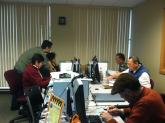
By November 2011, the EdLab Group’s Communities Connect Network Project (CCNP) upgraded 35 public computer centers throughout Washington State. These centers are being retrofitted to provide low-income families with direct access to computer resources, legal and health information, educational opportunities, and workforce development training.
BTOP funds allowed CCNP to deploy more than 93 new workstations, serving an average of 420 users per week. Along with these computers, CCNP is also partnering with 22 organizations to provide each center with services that meet the needs of its visitors. For example, at the Kalispel Tribal Court computer center, visitors can obtain online legal assistance, court records, and information about the law. Patrons can also communicate virtually with their legal counsel through Kalispel’s two videoconferencing stations.
Another partner, the Workforce Development Council of Seattle, is providing financial literacy training for staff members at eight computer centers in the city. Staff members learn concepts and techniques to teach local residents basic financial planning. Additionally, other partners are implementing digital literacy and career building classes on a variety of topics, such as basic computer skills, digital media editing, job search fundamentals, interview skills, and resume creation.
By the end of this BTOP project, CCNP will establish four new computer centers, upgrade 35 more, and distribute approximately 200 new workstations. To meet the needs of the state’s diverse population, CCNP offers its training classes in various languages, including English, Spanish, Vietnamese, and Somali. EdLab has also created an online portal for its partners, providing them with a forum to exchange curriculum, share information, and access guidance on how to manage the centers. To view CCNP’s online portal, please visit here http://communitiesconnect.org.
Last Updated: December 23, 2011
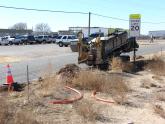
On January 21, 2011, the ENMR Telephone Cooperative (ENMR) began laying 74 miles of new fiber in two of the five communities where it will deploy broadband service as a result of a BTOP grant. Extending through eastern New Mexico and west Texas, the network will bring broadband connections to more than 200 underserved anchor institutions, increasing Internet access speeds to 1Gbps at educational institutions, public safety organizations, healthcare facilities, and government agencies.
In all five markets, ENMR will provide new broadband fiber and connectivity service, delivering Internet at discounted rates to local rural schools, state agencies, and other anchor facilities. This new network will also expand distance learning opportunities for students at schools and libraries at rural areas.
As of March 2011, BTOP funds have allowed ENMR to install more than 29 miles of new fiber. ENMR has already negotiated its construction contracts and permits with equipment vendors and expects to start construction on the remaining three market areas by mid-May 2011. ENMR estimates it will complete construction on the entire project by January 2012.
Last Updated: October 17, 2011.
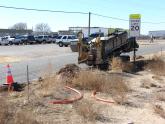
On January 21, 2011, the ENMR Telephone Cooperative (ENMR) began laying 74 miles of new fiber in two of the five communities where it will deploy broadband service as a result of a BTOP grant. Extending through eastern New Mexico and west Texas, the network will bring broadband connections to more than 200 underserved anchor institutions, increasing Internet access speeds to 1Gbps at educational institutions, public safety organizations, healthcare facilities, and government agencies.
In all five markets, ENMR will provide new broadband fiber and connectivity service, delivering Internet at discounted rates to local rural schools, state agencies, and other anchor facilities. This new network will also expand distance learning opportunities for students at schools and libraries at rural areas.
As of March 2011, BTOP funds have allowed ENMR to install more than 29 miles of new fiber. ENMR has already negotiated its construction contracts and permits with equipment vendors and expects to start construction on the remaining three market areas by mid-May 2011. ENMR estimates it will complete construction on the entire project by January 2012.
Last Updated: October 17, 2011.
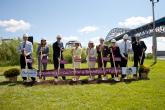
On August 25, 2011, Enventis Telecom, a subsidiary of HickoryTech, held a groundbreaking ceremony to celebrate the start of construction on its middle-mile project. Held at Rice’s Point in Duluth, Minn., the event had approximately 80 people in attendance. Several speakers, including U.S. Senator Amy Klobuchar and Minnesota Lt. Gov. Yvonne Prettner Solon, delivered remarks about the advantages of broadband and how Enventis’ new network will benefit 36 rural communities across 23 counties. State and company leaders performed the ceremonial first dig to formally launch the initial phase of the project.
Enventis’ Greater Minnesota Broadband Collaborative Project will bring affordable high-capacity Ethernet services to unserved and underserved rural areas. The new network will connect approximately 70 community anchor institutions to the Internet at speeds of up to 10GB.
Construction began on the Minneapolis/St. Paul to Duluth/Superior route, with Enventis laying fiber lines that will be part of a new 428-mile open access network. As of early December 2011, nearly 171 innerduct miles and 73 miles of fiber have been completed. Enventis expects to finish construction in the fall of 2013.
This project is creating jobs in construction, engineering, and project management.
Last Updated: December 23, 2011
Fayetteville State University and the Fayetteville Metropolitan Housing Authority opened a new BTOP-funded public computer center (PCC) in North Carolina on August 16, 2010. State legislators, local officials, community leaders, and residents attended a ribbon-cutting ceremony for the Community Computing & Learning Center, and Mayor Pro Tem D.J. Haire spoke about the importance of the project and its potential to transform lives. The new PCC is open to the general public and includes 10 workstations in an open-use area, and 20 additional workstations equipped with videoconferencing technology, as well as various group and one-on-one training courses. To see local news coverage, please visit here.
Last Updated: November 22, 2010

In September 2011, First Step Internet completed construction on seven microwave towers, which will extend broadband Internet coverage with speeds up to 100 Mbps across Idaho’s rural counties of Latah, Idaho, Clearwater, Lewis, and Nez Perce. With these seven towers, First Step Internet also activated a wireless area network that covers more than 150 miles and connected nine community anchor institutions, including two libraries, five schools, one Medical clinic, and one City Government building.
As part of the project, First Step Internet plans to build a total of 10 microwave towers and 69 fixed microwave paths that will connect a regional 550-mile network and provide wireless Internet access to as many as 21,000 households, 700 businesses, and 42 community anchor institutions.
First Step Internet’s network will also complement the Nez Perce Tribe Reservation Broadband Enhancement project, another BTOP grant that is providing high-speed, affordable broadband services across 1,200 square miles of reservation land. Combined, these two grants will provide complete broadband coverage for members of the reservation.
Additionally, First Step Internet launched an innovative outreach campaign to promote the benefits of broadband. The program created a television public service announcement to showcase the project’s construction progress and detail how high-speed Internet access will benefit the community.
Last Updated: December 7, 2011

“If you give a student a laptop, you can’t stop him or her from learning,” said Foundation for California Community Colleges Chancellor Jack Scott. California Assemblywoman Susan Bonilla joined Chancellor Scott, Foundation staff, and industry and community partners on March 23, 2011 to celebrate the launch of the California Connects program. California Connects, in partnership with community colleges and community-based organizations across an 18-county region in the Central Valley, is using BTOP funds to increase digital literacy skills and broadband adoption through providing outreach, training, and learning support to underserved communities.
California Connects is utilizing local students in the Central Valley to provide training in area communities, home to many low-income Spanish speaking residents. More than 5,800 socioeconomically disadvantaged students enrolled in the Mathematics, Engineering, and Science Achievement (MESA) program at 33 local community colleges will serve as trainers in their communities. Many of these students have already received laptops, Microsoft IT Academy training, and access to on-campus certification exams. As of April 2011, the Foundation has already launched the “Train-the-Trainer” digital literacy program and held two workshops. The Foundation expects to distribute an additional 3,000 laptops to MESA trainers by this summer.
MESA trainers will teach residents to navigate the Internet, search for jobs online, and access important health and finance information. The Foundation hopes the training and improved access will help increase the number of broadband Internet users throughout the Central Valley by more than 61,000 people.
Last Updated: October 17, 2011.
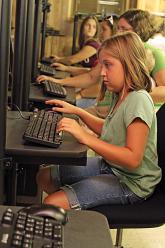
Future Generations Graduate School’s West Virginia project is using the community presence of fire stations across the state to increase broadband access. In a novel twist on the concept of community anchor institutions, Future Generations WV will use BTOP funds to outfit and open 60 computer centers in fire stations, with a focus on low-income counties. The project has already opened 30 centers in 18 counties. Currently, 26 centers hold basic computer skills classes, and educational partner organizations are contracted to run additional training on topics such as e-commerce, chronic disease self-management and substance abuse, and community-based emergency response and awareness. Many of the courses are offered as self-paced learning so that users can fit the training around their busy schedules.
FutureGenerations WV is using survey research in each community to assess needs and measure project impact. Eight surveyors conducted 900 door-to-door household surveys from July to November 2010. While 66 percent of the households owned computers, only 48 percent had access to broadband. Respondents noted that high costs and lack of access were two main reasons for not using broadband at home.
The volunteer fire departments and emergency rescue squads manage the centers and maintain at least one computer mentor at each center to assist the community in training and using the computers. The public computer centers have already proven particularly helpful in communities struggling with high unemployment. An unemployed paramedic commented, “I don’t feel I can afford the extra bill for the internet. I am in the process of completing online courses for the requirements of the nursing class I am pursuing. Upper Laurel has been such a blessing to me.” So far 783 West Virginians have been active users at the centers. Future Generations hopes that the centers will help residents to pursue higher education and retrain for job opportunities. In addition, volunteer fire department and rescue squads are learning to submit reports electronically and access supplemental online training programs for certifications and continued learning.
Last Updated: October 17, 2011.

Georgia Partnership for TeleHealth (GPT) is using telemedicine to address poor health and the lack of high-quality healthcare in 91 of the state’s counties designated as having persistent poverty. Its BTOP-funded project, TeleConnect Georgia for Better Health, is connecting its 64 additional healthcare sites statewide to its existing network of 250 locations, such as hospitals, clinics, nursing homes, public health departments, and physicians’ offices.
TeleConnect Georgia has also initiated a variety of outreach and awareness-building activities to demonstrate how state residents will benefit from this new network. For example, the program offers free online education to rural Georgia physician office employees. The courses cover areas such as health information technology, computer skills, and physician practice education. In December 2011, more than 300 students were registered in the project’s online training center and over 100 individuals attended related webinars.
Additionally, TeleConnect Georgia created Peachy, a mascot to help raise awareness about this new broadband network among young students and their families. During school visits, Peachy teaches kids how to log on to the teleconnectga.com website to play games that promote healthy choices and habits. Students also receive goodie bags from Peachy, including materials for parents, which refer them to the website for more information about broadband. As of December 2011, Peachy made visits to four school systems, including more than a dozen elementary schools and approximately 5,000 first graders.
The state residents who are benefiting the most from access to this telehealth network are those who would not otherwise have access to, or would have to drive hours to see, a specialist. TeleConnect Georgia’s new network is helping patients gain better access to specialty care services, reducing the number of acute care cases and keeping patients out of emergency rooms and hospitals.
Last updated: January 10, 2012
















